I'll never go that far ever again…
donderdag 19 februari 2009
zondag 15 februari 2009
Literary madness
This week I received the first two issues of the world's first magazine dedicated entirely to the literary mad or kooks, the "Cahiers de l'Institut" published by the IIREFL, the "Institut International de Recherches et d'Exploration sur les Fous Littéraires, hétéroclites, excentriques, irréguliers, outsiders, tapés, assimilés, sans oublier tous les autres".
France, the 19th century
This subject seems to have been a field of study France since the 19th century. Maybe because then paper became relatively cheap, giving the opportunity to more people to publish a book on any subject.
The first two who wrote about it may also give a clue as to how we can recognize this peculiar category of writers.
Charles Nodier
(1780-1844) , a prolific writer on any subject, was one of the most prolific writers who ever lived. I have his short booklet
-"Bibliographie des fous. De quelques livres excentriques", Paris, 1835.
Republished recently by Les Editions des Cendres

"« J’entends ici par un livre excentrique un livre qui est fait hors de toutes les règles communes de la composition
et du style, et dont il est impossible ou très difficile de deviner le but, quand il est arrivé par hasard que l’auteur
eut un but en l’écrivant… J’entends ici par un livre excentrique un livre qui est fait hors de toutes les règles communes de la composition et du style, et dont il est impossible ou très difficile de deviner le but, quand il est arrivé par hasard que l’auteur eut un but en l’écrivant."
- He also wrote an essay on both Bonaventure des Périers & Cyrano de Bergerac in 1841*, two writers who very well fit our category.

While he wrote on the subject, he was himself the author of some very strange texts:
-"Critiques de l'imprimerie par le docteur Neophobus" reprinted in 1989

and especially
-"Histoire du roi de bohême et de ses sept châteaux" *

A story without story nor characters, this text from 1830 is a collection of caricatural abstractions and immaterial voices. The author played with the typography as well, deliberately adding errors and strange page breaks.

One of the first books where the engravings are placed where they seem to reinforce the text.

Octave Delepierre
(1804-1879)
this Belgian author (born in Bruges) wrote
" … Si nous avons souvent eu l’occasion de nous étonner de l’intelligence qui se rencontre dans les compositions des fous, il est peut-être plus étonnant encore de voir les folies qui sortent du cerveau d’écrivains intelligents et sensés. "
in his seminal
- "Histoire littéraire des Fous", 1860.*

-"Supercheries littéraires, pastiches", 1872 * (a book more concerned of hoaxes and literary forgeries but still of borderline interest for our subject).

Champfleury
(Jules Husson, 1821-1889)
published the large (380 pages)
- "Les Excentriques", 1852.*
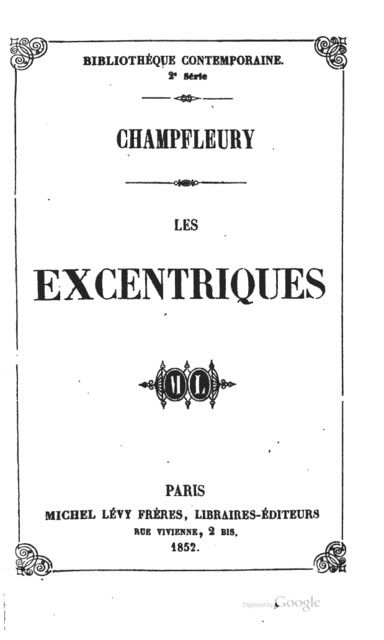
Other authors
- Alfred Carel: "Histoire anecdotique des contemporains", 1885*

- Théophile Gautier (1811-1872): "Les Grotesques", 1853*

- Charles Monselet (1825-1888): "Les originaux du siecle dernier", 1864*
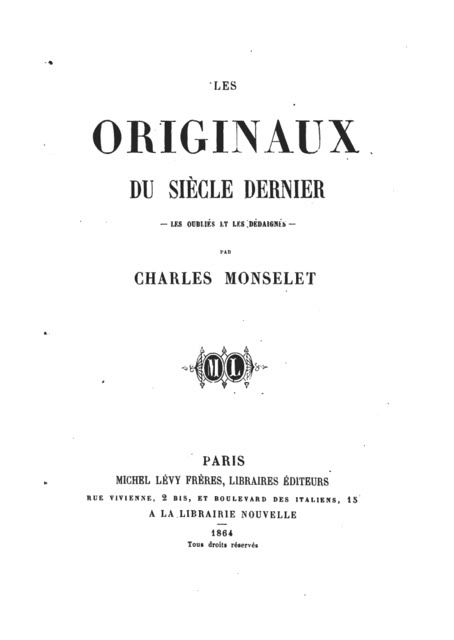
- From the same, "Les oubliés et les dédaignés", 1857*
- J.-M. Quérard: "Les supercheries littéraires dévoilées", 1869 *
 cfr. Delepierre supra.
cfr. Delepierre supra.
- Philomneste jr (Pierre Gustave Brunet): "Les fous littéraires - essai bibliographique sur la littérature excentrique, les illuminés, visionnaires
", 1880* (republished in 2001)

- August Ivanovich Cherpakov: "Les Fous littéraires", 1883 *
United Kingdom and United States, 19th century
Charles MacKay
(1814-1889) wrote
- "Memoirs of popular delusions and the madness of the crowds"* in 1841. Not specifically about strange literature but here and there references are found.

Isaac D'Israeli
(1766 -1848) wrote the extensive (3 vol.)
- "Curiosities of literature" (published in several volumes, starting from 1791)*, a collection of anecdotes about historical persons and events, unusual books, and the habits of book-collectors..

Other writers of interest
- John Fyvie: "Literary Eccentrics"*
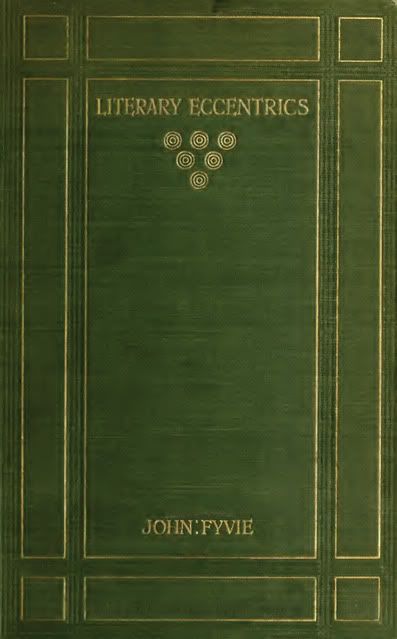
- J.A. Farrer: "Literary forgeries", 1907*

- John Timbs: "English Eccentrics and Eccentricities", 1865*

- Anon: "Biographical sketches of eccentric characters", 1887*
France, 20th century
Bizarre
In the fifties, the magnificent magazine "Bizarre" published an entire issue on this subject.
Sadly impossible to get…

But the real masters who studied literary madness were closely related to the Collège de 'Pataphysique.
Raymond Queneau
To me the most important French writer ever. An erudite, mathematician, novelist, he participated from far to the first years of French surrealism but soon decided Breton was way too full of himself. He became one of the early members of the Collège when it was founded in 1948. Queneau collected strange books, and the result of his research was written down in the novel "Les enfants du Limon" (1938)

in which the writer Chambernac has become obsessed with litterary madmen, and decides to write a book on the subject. His secretary Purpulan, in reality a demon from hell, watches his master slowly becoming insane. Or is he?
André Blavier
This librarian from Liège in Belgium wrote the ultimate book on this subject.
- "Les Fous littéraires", 1982

Collectors of strange books are used to specify if they're in the 'Blavier' or not. Hundreds of books are referenced here, showing an entire life dedicated to them. One of the books on my shelves I'm particularly proud to own. Blavier was an admirer of Queneau. Lots of letters were exchanged between the two before this book was published.
I remember going to the presentation of the book in Brussels in 1982. I I was a student, had no car, and could only stay for about 15 minutes and then run to catch my train. But seeing André Blavier and Noël Arnaud in the distance, my first meeting with the Collège, was a big enough reward.
Netherlands, 20th century
Matthijs Van Boxsel started studying stupidity in the eighties. Three books of the "Encyclopedia of Stupidity"were published and he offered a real course in stupidity at the Rietveld Academy in Amsterdam. He gives very serious lectures on stupidity everywhere, often for doctors or managers. This site mentions 'the results can be sensed everywhere'.
I remember seeing him when he came to present his book 'Morosofie' (in Dutch) at an exhibit at the excellent Museum Dr. Ghuislain in Ghent, specialized in psychiatric and outsider art.
His books are translated in English and in French..
I have the three original Dutch editions, a beautiful lay-out and magnificent covers (one of them painted by his brother)..
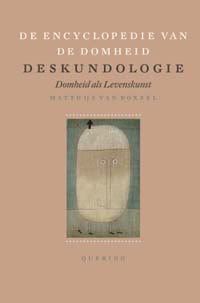


Together with some Dutch writers Matthijs Van Boxsel founded the Bâtafysica in 1972 or the dutch equivalent of the French Collège..
USA, 20th century
In the eighties Donna Kossy developped the Kooks museum, an online collection of kooks and nutcases. I once mailed to her writing about Queneau and Blavier and she wrote back she had never heard of them...
Now she sells weird books online through 'Book Happy'. Her catalog can be seen on Abe books. Her spouse Nenslo animates the 'Online Kooks Museum Collection of Collections', where one can also see what's on the shelves of the museum. Finally, Donna has a weblog, 'the cutthroat worl of scouting' where she writes about her new acquisitions.
Donna's book 'Kooks - a guide to the outer limits of human belief' is on my shelf!

A few sites are dedicated to some of the greatest weid writers in English literature.
(Robert) Lionel Fanthorpe
The fortean reverend, often published in Fortean Times, survived writing tons of pulp in the fifties, and his peculiar offbeat style is worth checking out. Often Badger books would send him the cover art, and from then he would write a novel..
a quote:
"The space in which they found themselves at present was a large open-looking chamber with a very high ceiling. It gave an impression of tragic grandeur which would have reminded Vir of old Vienna, except for the fact that he had never been there."
Harry Stephen Keeler
A writer reputed to be the Ed Wood of American novelists..
Example: A disgruntled phone company employee calls every man in Minneapolis, telling him the morning papers will name him as the secret husband of convicted murderess Jemimah Cobb, who runs a whorehouse specializing in women with physical abnormalities. (The Man With the Magic Eardrums, 1939)
There's a Harry Stephen Keeler society. And check out these pages at Ramblehouse.
See also, less funny, from a sceptic's POV:
Quackwatch
Pseudoscience
Today
Today, the excellent Alamblog is the main source for numerous studies and sometimes new discoveries,, together with Eric Poindrons Cabinet des curiosités (both in french). And now of course there's also the Institut, which doesn't seem to have a website.
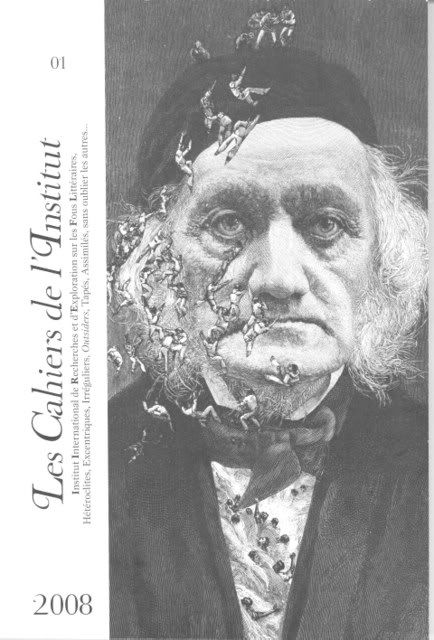

Most contributors are members of the aforementioned Collège, and their research owes a lot to André Blavier.
Finally, I'd like to point out a book by architect Luigi Serafini, called "Codex Seraphinianus". Seems like a Voynich manuscript written while tripping on Peyote. Several editions can be found online, but I suppose nothing beats paper…
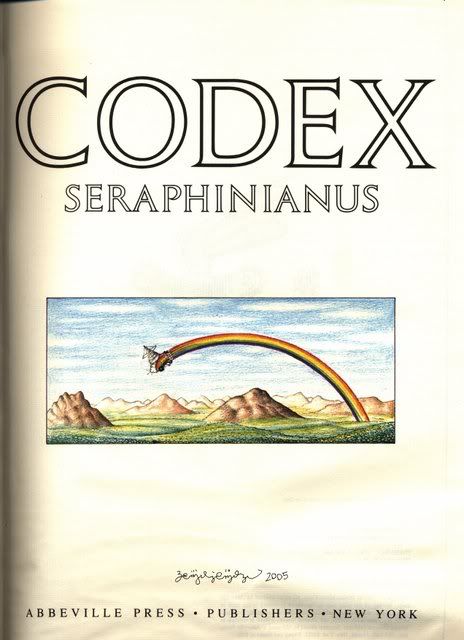
The books referred to with an * are available digitally on Scribd or on the Internet Text Archive.

France, the 19th century
This subject seems to have been a field of study France since the 19th century. Maybe because then paper became relatively cheap, giving the opportunity to more people to publish a book on any subject.
The first two who wrote about it may also give a clue as to how we can recognize this peculiar category of writers.
Charles Nodier
(1780-1844) , a prolific writer on any subject, was one of the most prolific writers who ever lived. I have his short booklet
-"Bibliographie des fous. De quelques livres excentriques", Paris, 1835.
Republished recently by Les Editions des Cendres

"« J’entends ici par un livre excentrique un livre qui est fait hors de toutes les règles communes de la composition
et du style, et dont il est impossible ou très difficile de deviner le but, quand il est arrivé par hasard que l’auteur
eut un but en l’écrivant… J’entends ici par un livre excentrique un livre qui est fait hors de toutes les règles communes de la composition et du style, et dont il est impossible ou très difficile de deviner le but, quand il est arrivé par hasard que l’auteur eut un but en l’écrivant."
- He also wrote an essay on both Bonaventure des Périers & Cyrano de Bergerac in 1841*, two writers who very well fit our category.

While he wrote on the subject, he was himself the author of some very strange texts:
-"Critiques de l'imprimerie par le docteur Neophobus" reprinted in 1989

and especially
-"Histoire du roi de bohême et de ses sept châteaux" *

A story without story nor characters, this text from 1830 is a collection of caricatural abstractions and immaterial voices. The author played with the typography as well, deliberately adding errors and strange page breaks.

One of the first books where the engravings are placed where they seem to reinforce the text.

Octave Delepierre
(1804-1879)
this Belgian author (born in Bruges) wrote
" … Si nous avons souvent eu l’occasion de nous étonner de l’intelligence qui se rencontre dans les compositions des fous, il est peut-être plus étonnant encore de voir les folies qui sortent du cerveau d’écrivains intelligents et sensés. "
in his seminal
- "Histoire littéraire des Fous", 1860.*

-"Supercheries littéraires, pastiches", 1872 * (a book more concerned of hoaxes and literary forgeries but still of borderline interest for our subject).

Champfleury
(Jules Husson, 1821-1889)
published the large (380 pages)
- "Les Excentriques", 1852.*

Other authors
- Alfred Carel: "Histoire anecdotique des contemporains", 1885*

- Théophile Gautier (1811-1872): "Les Grotesques", 1853*

- Charles Monselet (1825-1888): "Les originaux du siecle dernier", 1864*

- From the same, "Les oubliés et les dédaignés", 1857*
- J.-M. Quérard: "Les supercheries littéraires dévoilées", 1869 *
 cfr. Delepierre supra.
cfr. Delepierre supra.- Philomneste jr (Pierre Gustave Brunet): "Les fous littéraires - essai bibliographique sur la littérature excentrique, les illuminés, visionnaires
", 1880* (republished in 2001)

- August Ivanovich Cherpakov: "Les Fous littéraires", 1883 *
United Kingdom and United States, 19th century
Charles MacKay
(1814-1889) wrote
- "Memoirs of popular delusions and the madness of the crowds"* in 1841. Not specifically about strange literature but here and there references are found.

Isaac D'Israeli
(1766 -1848) wrote the extensive (3 vol.)
- "Curiosities of literature" (published in several volumes, starting from 1791)*, a collection of anecdotes about historical persons and events, unusual books, and the habits of book-collectors..

Other writers of interest
- John Fyvie: "Literary Eccentrics"*

- J.A. Farrer: "Literary forgeries", 1907*

- John Timbs: "English Eccentrics and Eccentricities", 1865*

- Anon: "Biographical sketches of eccentric characters", 1887*

France, 20th century
Bizarre
In the fifties, the magnificent magazine "Bizarre" published an entire issue on this subject.
Sadly impossible to get…

But the real masters who studied literary madness were closely related to the Collège de 'Pataphysique.
Raymond Queneau
To me the most important French writer ever. An erudite, mathematician, novelist, he participated from far to the first years of French surrealism but soon decided Breton was way too full of himself. He became one of the early members of the Collège when it was founded in 1948. Queneau collected strange books, and the result of his research was written down in the novel "Les enfants du Limon" (1938)

in which the writer Chambernac has become obsessed with litterary madmen, and decides to write a book on the subject. His secretary Purpulan, in reality a demon from hell, watches his master slowly becoming insane. Or is he?
André Blavier
This librarian from Liège in Belgium wrote the ultimate book on this subject.
- "Les Fous littéraires", 1982

Collectors of strange books are used to specify if they're in the 'Blavier' or not. Hundreds of books are referenced here, showing an entire life dedicated to them. One of the books on my shelves I'm particularly proud to own. Blavier was an admirer of Queneau. Lots of letters were exchanged between the two before this book was published.
I remember going to the presentation of the book in Brussels in 1982. I I was a student, had no car, and could only stay for about 15 minutes and then run to catch my train. But seeing André Blavier and Noël Arnaud in the distance, my first meeting with the Collège, was a big enough reward.
Netherlands, 20th century
Matthijs Van Boxsel started studying stupidity in the eighties. Three books of the "Encyclopedia of Stupidity"were published and he offered a real course in stupidity at the Rietveld Academy in Amsterdam. He gives very serious lectures on stupidity everywhere, often for doctors or managers. This site mentions 'the results can be sensed everywhere'.
I remember seeing him when he came to present his book 'Morosofie' (in Dutch) at an exhibit at the excellent Museum Dr. Ghuislain in Ghent, specialized in psychiatric and outsider art.
His books are translated in English and in French..
I have the three original Dutch editions, a beautiful lay-out and magnificent covers (one of them painted by his brother)..



Together with some Dutch writers Matthijs Van Boxsel founded the Bâtafysica in 1972 or the dutch equivalent of the French Collège..
USA, 20th century
In the eighties Donna Kossy developped the Kooks museum, an online collection of kooks and nutcases. I once mailed to her writing about Queneau and Blavier and she wrote back she had never heard of them...
Now she sells weird books online through 'Book Happy'. Her catalog can be seen on Abe books. Her spouse Nenslo animates the 'Online Kooks Museum Collection of Collections', where one can also see what's on the shelves of the museum. Finally, Donna has a weblog, 'the cutthroat worl of scouting' where she writes about her new acquisitions.
Donna's book 'Kooks - a guide to the outer limits of human belief' is on my shelf!

A few sites are dedicated to some of the greatest weid writers in English literature.
(Robert) Lionel Fanthorpe
The fortean reverend, often published in Fortean Times, survived writing tons of pulp in the fifties, and his peculiar offbeat style is worth checking out. Often Badger books would send him the cover art, and from then he would write a novel..
a quote:
"The space in which they found themselves at present was a large open-looking chamber with a very high ceiling. It gave an impression of tragic grandeur which would have reminded Vir of old Vienna, except for the fact that he had never been there."
Harry Stephen Keeler
A writer reputed to be the Ed Wood of American novelists..
Example: A disgruntled phone company employee calls every man in Minneapolis, telling him the morning papers will name him as the secret husband of convicted murderess Jemimah Cobb, who runs a whorehouse specializing in women with physical abnormalities. (The Man With the Magic Eardrums, 1939)
There's a Harry Stephen Keeler society. And check out these pages at Ramblehouse.
See also, less funny, from a sceptic's POV:
Quackwatch
Pseudoscience
Today
Today, the excellent Alamblog is the main source for numerous studies and sometimes new discoveries,, together with Eric Poindrons Cabinet des curiosités (both in french). And now of course there's also the Institut, which doesn't seem to have a website.


Most contributors are members of the aforementioned Collège, and their research owes a lot to André Blavier.
Finally, I'd like to point out a book by architect Luigi Serafini, called "Codex Seraphinianus". Seems like a Voynich manuscript written while tripping on Peyote. Several editions can be found online, but I suppose nothing beats paper…

The books referred to with an * are available digitally on Scribd or on the Internet Text Archive.

vrijdag 6 februari 2009
Immortal cucumbers
We might consider apoptosis as the essential ingredient to consciousness.
Programmed cell death, for which a death-gene has been designed (intelligently or not), if ever manipulated, might theoretically offer immortality. But at a cost: our memory system functions by cutting out some connections while keeping others. Just like the darkness inbetween the stars, the no-thing that was before the Big Bang, makes the stars possible.
This 'natural' selection of memories makes us individual sentient beings. Without apoptosis, all connections would remain live, switched on forever, causing us to remember every single event, evenly producing a grey field of noise. By cutting off the peaks of awareness, we'd become immortal cucumbers.
Derisanamcope, 21th November
Programmed cell death, for which a death-gene has been designed (intelligently or not), if ever manipulated, might theoretically offer immortality. But at a cost: our memory system functions by cutting out some connections while keeping others. Just like the darkness inbetween the stars, the no-thing that was before the Big Bang, makes the stars possible.
This 'natural' selection of memories makes us individual sentient beings. Without apoptosis, all connections would remain live, switched on forever, causing us to remember every single event, evenly producing a grey field of noise. By cutting off the peaks of awareness, we'd become immortal cucumbers.
Derisanamcope, 21th November
Abonneren op:
Posts (Atom)
